Insulating your home
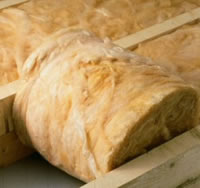
According to the National Insulation Association, the average home loses more than 40% of its heat through the loft space and the walls of the house. Of this heat, more is lost through the walls than anything else - approximately 33% in an un-insulated home. Insulating your home can be one of the most cost effective and energy efficient measures which can save you up to £400 a year in a typical home.
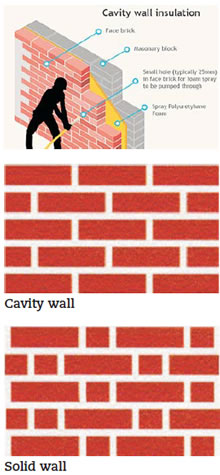
Cavity Wall Insulation
Cavity wall insulation is used to reduce heat loss through a cavity wall by filling the air space with a porous material which immobilises the air within the cavity.
New builds, during the construction process are often filled with glass fibre wool or rock wool panels placed between the two sides of the wall. Existing buildings without cavity wall insulation get filled with fibrous material such as cellulose or glass wool which is blown into the cavity through suitably drilled holes until the entire wall space is full.
To check if you have a cavity wall and are suitable for insulating it you can tell pretty easily. Most properties built from 1924 onwards will have cavity walls. If it was built pre-1924 then its most likely to have solid walls.
See images right to determine.
Insulating your cavity walls will reduce heat loss, prevent convection and keeps the home warm by making sure heat is not escaping though unnecessary places such as the walls of the property.
Cost
Cavity wall insulation can save a homeowner around £135 a year costing between £100 and £350 to install. You will recoup the cost of this back in less than 3 years on savings in your energy bills as well as saving around 550kg of CO² per year!
| Annual saving | Installation cost | Payback | CO² saving |
|---|---|---|---|
| Up to £135 | £100-£350 - possibly FREE! Call us for details. | 1-3 years | Around 550kg |
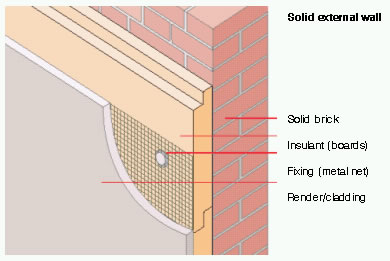
External Wall Insulation
What is External Wall Insulation?
External wall insulation or EWI is thermally insulated, protective yet decorative exterior cladding system which consists of expanded polystyrene, mineral wool or phenol foam, together with reinforced cement based mineral or plaster finish.
External wall insulation involves fixing a layer of insulation material to the outside wall, then covering it with a special type of render, plaster work or cladding. The finish depends on property tyre or homeowners choice and can consist of anything from smooth, textured or painted, tiled, pebbled or brick slips.
EWI is usually only applied to 'solid walls' homes. Virtually all homes before 1924 will have solid walls rather than cavity walls; however it is advised before installation to check planning permission with building regulations as it is mounted to an outside wall.
Installing external wall insulation can be applied without disruption of the household and does not reduce the size of rooms in the property. It gives the outside walls a new appearance as well as improving weather proofing and sound resistance, also filling any cracks and gaps in the brick work will reduce draughts.
| Type of solid wall | Saving | Total cost inc. installation | CO² saving |
|---|---|---|---|
| External wall | Around £475 | £9,400 - £13,000 | 1.9 tonnes |
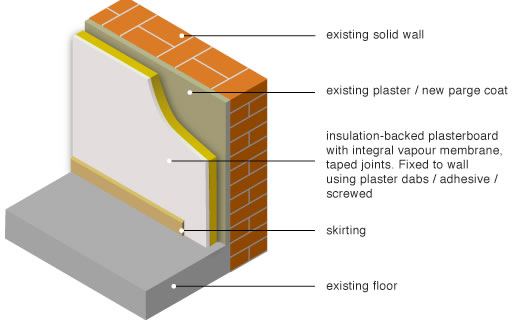
Internal Wall Insulation
What is Internal Wall Insulation (IWI)?
IWI is also known as insulated dry lining and consists of a layer of insulating material behind a layer of plasterboard. It is applied from the inside of the house and necessitates the removal of all fittings affixed to the walls, radiators, skirting boards, architraves etc.
Insulated dry lining or internal wall insulation is laid between the timber studs fixed to the inside of the walls, which is then sealed and covered by foiled plasterboard to retain heat.
Internal wall insulation is good for solid wall properties where cavity wall insulation is not applicable. It is mounted to the inside of the property walls, therefore traps the heat before it gets to an outside wall; this does cause disruption in the household when installation is taking place, as well as slightly reducing the room size, due to the plasterboard sitting over the top of the timber fixings and insulation.
Insulation the inside of your exterior walls, can be a cost effective way of cutting down your heating bills - and also a more aesthetically pleasing option to external wall insulation.
| Type of solid wall | Saving | Total cost inc. installation | CO² saving |
|---|---|---|---|
| Internal wall | Around £445 | £5,500 - £8,500 | 1.8 tonnes |
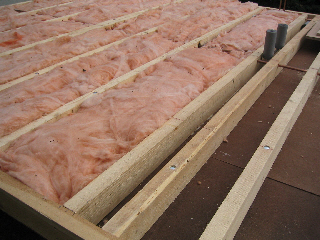
Floor Insulation
Insulation under the floor boards on your ground floor will save you around £60 a year. As well as under floor boards, sealing gaps between skirting boards will reduce draughts too.
Older homes with timber floors can be insulated by lifting floorboards and laying mineral wool insulation supported by netting between joists.
Insulating any floors that are above unheated spaces such as garages will help to retain heat as these rooms tend to lose heat quick. Insulating the floor of your home will add to living in a warmer and more comfortable home.
Cost
The cost of floor insulation can be as cheap as £100 if a home owner does it themselves, £770 professionally. Filling in the gaps between the floor and skirting boards which is a very simple task at a low price of around £20 will contribute to a warmer home and a combined annual saving of CO² of around 340KG.
| Annual saving | Cost | Payback | CO² saving | |
|---|---|---|---|---|
| Floor insulation | Around £60 | £100 DIY £770 Professional |
Around 2 years | Around 1 year |
| Filling in gaps | Around £25 | Around £20 | Around 1 year | Around 100kg |
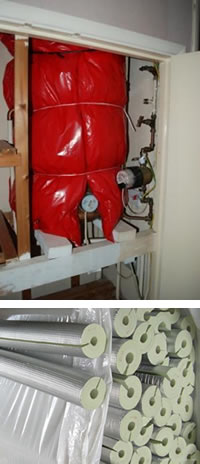
Heating Insulation
What is heating insulation?
Heating insulation is as simple as insulating the instruments used to create heat, to preserve the heat for longer eg hot water pipes and hot water cylinder. Insulating your hot water cylinder is one of the easiest ways to save energy therefore saving you money! If the cylinder has a jacket fitted, check that the thickness is at least 75mm thick, if not it's worth treating it to a new winter coat!
A standard jacket around the cylinder will cut heat loss by over 75% and save you around £40 a year - more than the cost of insulation it. Lagging your hot water tank will not only reduce the amount of energy you will use and need to keep the water warm, but will reduce CO² emissions and the contributing gas responsible for climate change.
Insulating cold water tanks and pipes protects them against frost damage, with a secondary benefit of saving energy. Generally cold water in a tank with insulation is warmer than cold water in a tank without insulation, so it uses less energy to heat it.
Pipe insulation around exposed hot water pipes will keep your water hotter for longer therefore minimising the amount of time heating is applied in the house.
Cold water tanks can use sheet insulating material or wrap insulating blankets around the sides, with a cover over the top. Insulation the bottom of the tank is unnecessary as it is protected from freezing by the heat rising.
These are very simple yet cost effective measures that prevent heat loss in the home at a low cost.
| Annual saving | Cost | Payback | CO² saving | |
|---|---|---|---|---|
| Hot water jacket | Around £40 | £15 | Less than 6 months | Around 170kg |
| Pipe insulation | Around £15 | Around £10 | Around 1 year | Around 60kg |
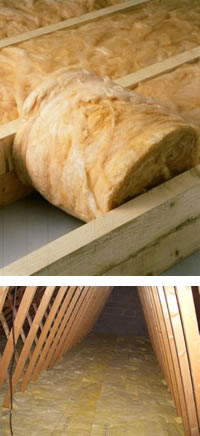
Loft Insulation
What is loft insulation?
Insulating your loft means that it is covered with an extra layer of material that stops the heat from escaping to the outside.
Thick layers of mineral wool called insulation blankets are laid flat between the beams that make up the flooring of the loft. To get the best effect usually two layers of blankets are put in - around 270mm thick.
Material used to insulate lofts is widely available from local DIY stores at a fairly reasonable price. Installing the insulation properly is essential so it doesn't cause problems with poor ventilation in the loft.
20% of a homeowner's energy bill can be saved by effective loft insulation. This is another small cost effective way which is quick and easy to install.
There are 4 different types of loft insulation that can be laid, that effectively all do the same job in insulation your home.
- Blanket insulation
- Granular loose fit insulation
- Sheet insulation
- Blown fibre insulation
Blanket Insulation
Glass fibre, foil backed felt, rock fibre or mineral fibre insulation is available by roll that will fit snugly between the joists. Rolls of blanket insulation are available in 75mm and 100mm thickness and the width of roles can range from 300mm to 120mm depending on what you need for your particular roof. Lengths can also vary depending on what you need; usually 5m to about 9.4m.
Granular loose fill insulation
Cork granules, mineral wool or cellulose fibre are all forms of loose fill insulation. This may not be the most suitable insulation type in a very draughty loft space as in high winds; the draught can cause the fibre to blow about. However this is very easy to apply and is especially useful for areas where joists are irregularly spaced and where pipes or other obstructions make it difficult for blanket insulation to be laid.
Sheet Insulation
If the loft space is to be used, then insulating the sloping surfaces of the roof instead of the floor is advisable. Sheet insulation fits in between the rafters insulating the sloping sides of the roof. When installing sheet insulation always allow sufficient space between the insulation and the roof slates or tiles to allow for ventilation and prevent condensation.
Blown Fibre Insulation
This method of insulation, like granular loose fill, is not recommended in a draughty loft space as in high winds this can blow about. A professional contractor can be employed to blow fibrous inter and joist insulation.
Because heat rises, insulating the loft will keep the heat inside. Instead of contributing to the 25% heat loss through poorly insulated lofts - this will reduce it. 270mm is the required amount of insulation for a loft. Some older houses may only contain 100mm and if this is the case, insulating to the required amount will prove to be worthwhile over the course of a year 2 year in which you will have recouped your money in savings!
| Loft insulation 0-270mm | Loft insulation 100-270mm | |
|---|---|---|
| Approximate savings per year | Up to £175 | £25 |
| Insulation cost (£) | 100-350 - possibly FREE! Call us for details. | |
| Payback | Up to 2 years | From 2 years |
| CO² saving | Around 720kg | Around 110kg |
Draught Proofing
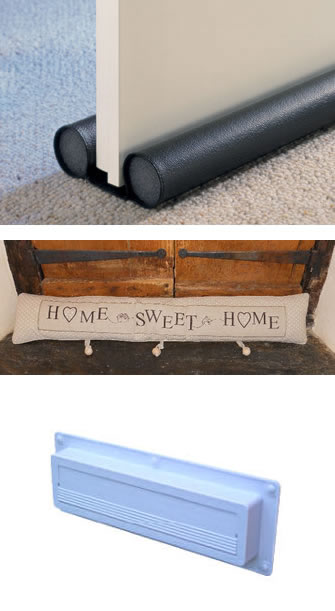
What is draught proofing?
Draught proofing simply includes sealing any gaps through which cold air can enter the home. Places to look out for are around doors, windows, loft hatch and chimneys, pipe work leading outside and ceiling to wall joints.
Ventilation needs to be considered in 'wet rooms' such as the bathroom and kitchen as a build up of moisture can lead to damp and mould. If they are not installed already, extractor fans should be put in place in these rooms.
This coming winter, the average UK household will lose 20% of all heat through draughts and poor ventilation.
Areas for attention
Draught stripping single glazed windows could lead to higher levels of condensation on the window-panes. With this, secondary glazing or double glazing is the best draught proofing seal for windows.
Door draughts - sometimes the old ways for insulating doors are the best - "snake draught excluders". These are a stylish and effective way to combat warm air escaping under door frames. More modern versions of the 'snake' come in stylish fabric, each one filled with buckwheat husks, a natural and biodegradable grain. These snakes come in various shapes and sizes to fit all different door types.
Floor board draughts - Gapseal floor filler is used to fill gaps between floorboards, preventing draughts and making rooms more heat efficient. Once inserted it is invisible to the eye and will retain the natural look of the wooden flooring. Gapseal is superior to putty type floor fillers, paper mache or PVA glue/sawdust mix as it will not fall out when floor boards expand and contract with heat. Floor gap fillers save money on heating bills and also helps towards keeping smells, noise and insects from entering the home.
Letter box draughts - the 'Ecoflap' acts as a draught barrier for letterboxes. Positioned behind the letterbox on the interior of the door; the Ecoflap is designed so that the opening force is counteracted by a greater close. The result means that when the wind blows, it will always blow the flap shut and never open therefore completely draught proof. The Ecoflap will work with any existing outside letter plate that is horizontal. It also has no components to break and therefore even if the outside letterbox becomes damaged, the Ecoflap will remain intact and protect the house from draught.
Chimney Draughts - Chimney balloons are a simple cost effective way to stop chimney draughts and reduce heat loss, so saving energy and making your home warmer. These balloons are easily installed and easily removed; a chimney balloon is an inflatable bag made from a special laminate that makes them air tight, tear resistant and long-lasting. The simple fact is that warm air rises and cold air sinks so with a chimney balloon, it can stop both at once, stopping cold air from entering and keeping warm air from escaping.
Applying these measures to the home will contribute to the reduction of heat loss and add comfort to the whole household.
Potentially, draught proofing will save the average person around £55 per year on energy bills. Draught-free homes are comfortable at lower temperatures - so you'll be able to turn down your thermostat - saving you another £60 per year!
If every household in the UK used the best possible draught proofing, every year we would save 190 million and enough energy to heat nearly 400,000 homes!
If you would like to enquire about home insulation, please call us on 01670 828695 (Northumberland), or 01751 432096 (North Yorkshire).


